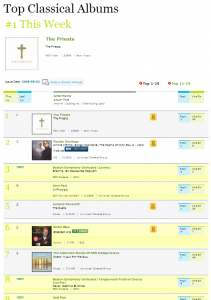Tonight was the last concert of the regular Symphony Hall season for the Tanglewood Festival Chorus, with our final production of Berlioz’s Te Deum. (For those keeping track at home, that’s two seasons in a row that we’ve closed out with Berlioz, though the Te Deum is a different order of magnitude–literally–from Les Troyens.)
It was a good concert. Before the performance, our Fearless Leader shared a few quick thoughts about our Friday afternoon show, saying, “And second tenors! Your entrance at the beginning had real beauty! For the very first time!” Aside from being a great example of John Oliver’s wit, the comment was also 100% correct. I am slowly realizing that with this chorus I can bring every ounce of my musicianship to every entrance, bring my voice to its limits every time, and it will almost be enough.
One thing I like about how things are going with the TFC is that I still have my voice intact after this concert run. In the past, I would have bellowed my way through a concert and blown out my pipes. There’s something nice about (a) knowing one’s limits and (b) recognizing when you are surrounded by 139 other highly gifted voices that can also help carry intensity and passion in the climactic moments.
The wonderful thing about a TFC season “ending,” of course, is that we never really are done. I’ll be at Tanglewood in July for Wagner’s Die Meistersinger and a reprise of the Brahms Requiem, and we get to start all over again just a few months later. Right now that sounds pretty good. I’m looking forward to the next run already. I haven’t sung Wagner yet.

